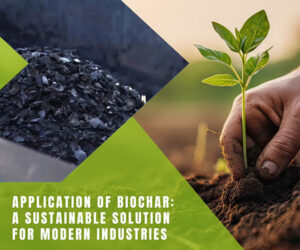Don’t know how to choose activated carbon? Choose the right one to double your efficiency!
1.Bloody Lessons! 90% of Companies Have Fallen into the Trap
Pitfalls that 90% of companies have fallen into “An automotive accessories company in East China was ordered to stop and correct its illegal behavior and fined 180,000 yuan for misusing activated carbon with unqualified technical indicators and violating relevant regulations of the Ministry of Ecology and Environment. The company was fined 180,000 yuan, and its related facilities and equipment were sealed. The responsible personnel were transferred to the public security organs for administrative detention…” “In order to reduce costs, a dye factory used low-priced activated carbon with substandard iodine value to treat dye wastewater. As a result, the activated carbon’s adsorption capacity for dye molecules was seriously insufficient, and the wastewater decolorization effect was poor, unable to meet the emission standards. The environmental protection department ordered it to rectify within a time limit, and the company had to re-purchase high-iodine value activated carbon. The cost of replacing the activated carbon plus the loss of production during the rectification period totaled more than 500,000 yuan…” These shocking cases tell us: choosing the wrong activated carbon = wasting environmental protection costs + reducing production efficiency. 90% of companies don’t know: the type, index, and scenario of activated carbon must be accurately matched!
2.Core dimensions that must be known when choosing activated carbon
01 Different materials determine adsorption capacity.
| Type | Raw materials | Applicable scenarios | Features |
| Coconut Shell Activated Carbon | Coconut Shell | Food decolorization, precious metal extraction, etc. | High adsorption performance, high strength, high purity, low ash content |
| Nutshell activated carbon | Walnut shells, apricot shells, peach shells and other hard nut shells | Food and beverage decolorization, oil deodorization, etc. | High-middle hole ratio, high cost performance, more balanced regeneration performance |
| Wood activated carbon | Wood chips (pine, birch, etc.), charcoal | Wastewater treatment, flue gas desulfurization, solvent recovery, etc. | Balanced adsorption, easy regeneration, more balanced cost and performance |
| Coal-based activated carbon | Anthracite, lignite, bituminous coal | Industrial waste gas treatment (such as desulfurization and denitrification), sewage treatment plant pretreatment, etc. | High macropore ratio, high mechanical strength, low cost |
Key points for selection decisions:
Small molecule fine treatment: coconut shell charcoal is preferred (such as drinking water, gas phase adsorption).
Medium molecule/decolorization: nutshell charcoal is more economical (such as food processing, wastewater decolorization).
Mixed system/regeneration requirements: wood charcoal has strong adaptability (such as chemical recycling, comprehensive wastewater).
Large molecule/low cost scenario: coal-based charcoal has outstanding cost performance (such as industrial waste gas, pretreatment).
02.Differentiate by form: scene adaptation is more critical.
| Type | Usage scenarios | Precautions |
| Powdered activated carbon | Emergency treatment, high-precision decolorization | Easy to clog the pipe, need matching filter |
| Granular activated carbon | Water treatment, gas treatment continuous adsorption | Packing density affects efficiency |
| Honeycomb activated carbon | Low drag exhaust gas treatment | Limited adsorption capacity, easily clogged |
03.Classification by function: Adsorption accuracy determines success or failure
Microporous activated carbon (pore size <2nm): adsorption of small molecules (formaldehyde, residual chlorine, etc.)
Mesoporous activated carbon (pore size 2-50nm): adsorption of large molecules (pigments, colloids, etc.)
Modified activated carbon: silver/sulfur loading, etc., to adjust the technical indicators of activated carbon for specific pollutants
3.Quick reference for industry selection
- Food and beverage industry
Core requirements: decolorization, deodorization, residue ≤0.5ppm
Recommended type: food-grade coconut shell charcoal (in compliance with GB/T 12496.8 standard)
Case: After a juice factory switched to high-iodine coconut shell charcoal, the decolorization efficiency increased by 70% - Pharmaceutical industry
Core requirements: sterile, no dissolution, adsorption capacity ≥800mg/g
Recommended type: pharmaceutical-grade columnar charcoal (heavy metal ≤0.01ppm)
Avoid pits: prohibit the use of industrial regenerated charcoal to prevent cross contamination - Chemical industry
Core requirements: high temperature resistance, compressive strength ≥90%
Recommended type: coal-based briquette charcoal (ash content ≤5%, excellent wear resistance)
Pain point: ordinary charcoal is replaced once every 3 months, and the life of modified charcoal can be extended to 18 months
Related recommendations
-
Chemical phosphoric acid activated carbon production process
421Phosphoric acid activation is a key technology for preparing highly porous activated carbon. This article explains in detail its production steps, phosphoric acid recovery methods and industry application cases.
View details -
Chemical activated carbon production line
627Understand the chemical activated carbon production line equipment and professional production technology to help improve the adsorption performance of activated carbon.
View details -
Biochar applications: sustainable solutions for modern industries
625Biochar is an environmentally friendly material produced by the pyrolysis of biomass that can improve soil fertility, absorb pollutants and help achieve carbon neutrality.
View details
 Henan Xuye Machinery Equipment Co., Ltd.
Henan Xuye Machinery Equipment Co., Ltd.




